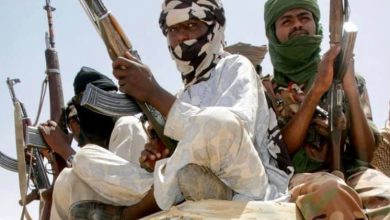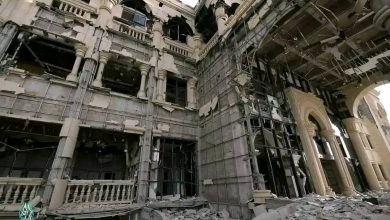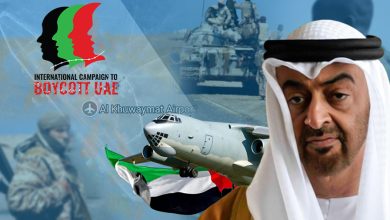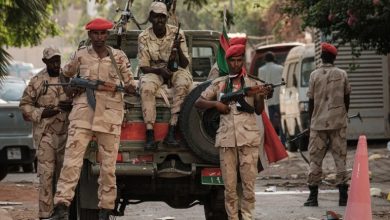Between Kaka’s Greeting and Haftar’s Support… What’s Happening in Sudan’s Western Flank?

Sudan Events – Agencies
Some Eid al-Adha greetings this year seemed like a thick curtain hiding the smoke of battles and the movement of military convoys.
At the same time Chadian President Mohamed Déby (Kaka) sent a congratulatory message to General Abdel Fattah al-Burhan on the occasion of Eid al-Adha, the Libyan sands were shaking under the wheels of military vehicles heading east—crossing the border triangle between Libya, Chad, and Sudan—toward the far north of Darfur, in a new attempt by the terrorist Rapid Support Forces (RSF) militia to reposition.
Between the greeting and the passage, the dimensions of invisible alliances begin to emerge—alliances attempting to establish a new reality on Sudan’s western borders using proxies without a cause and cross-border support that disregards sovereignty.
Haftar: A Regular Army with Entangled Militia Threads
Haftar’s movements cannot be understood without considering the composition of his military force and political project. The man who controls eastern Libya commands over 70,000 troops, made up of regular units, tribal militias, and hired fighters. His influence stretches from Benghazi to Tobruk and Sabha, with a notable expansion southward, especially in areas like Kufra and Murzuq.
Haftar’s arsenal includes a mix of Russian and Chinese armored vehicles, old Soviet aircraft, and light-to-medium weapons, alongside intelligence and logistical support from various regional actors.
But Haftar’s real strength lies beyond his formal forces—it extends to militias such as:
Desert Brigade (comprising fighters from the Tuareg and Tebu tribes)
Tariq bin Ziyad Battalion, known for its brutality in remote areas
Groups of mercenaries from Chad, Niger, and Mali, used for irregular operations and maneuvering in overlapping zones of influence.
Haftar’s Support for the RSF: Strategic Maneuver or Indirect Involvement?
The terrorist RSF militia, currently engaged in a brutal war against the Sudanese state, has for months been seeking external military support to compensate for its mounting losses. The militia has suffered severe blows in Khartoum and its surroundings, has been expelled from Sennar and Al-Jazira states, and has taken heavy hits in its Darfur strongholds.
Haftar appears to be the militia’s answer. He has provided a land corridor through southern Libya for assembling mercenaries, smuggling weapons, and redeploying exhausted fighters. It seems Haftar received a request—or perhaps an order—from his regional backers to do so.
Sources speaking to Al-Muhaqqiq estimate that the RSF presence in Libya ranges from 800 to 1,200 fighters, a large proportion of whom are mercenaries (Chadian, Nigerien, and remnants of Tuareg fighters from northern Mali), with very few worn-out Sudanese fighters among them.
They are armed mainly with Russian rifles (Kalashnikovs), PKM machine guns, and a limited number of “technical” vehicles mounted with DShK guns. They lack any air cover or advanced defensive capabilities. These forces are spread around Kufra and Sabha, in tribal environments that provide neither stable support nor field legitimacy.
Military Weaknesses That Can Be Exploited
Despite the RSF’s mobilization, its vulnerabilities outweigh its apparent strengths:
The mercenaries lack ideology and motivation to fight.
Desert supply routes are exposed and easily monitored or targeted from the air.
The absence of a social base in northern Darfur deprives them of genuine local support.
The lack of centralized control turns every unit into an isolated island.
With its organized structure and intimate knowledge of the terrain and local society, the Sudanese army is well positioned to exploit these weaknesses—by cutting supply lines, disrupting deployments, and thwarting the entire plan with minimal cost.
The Likely Target: Darfur, Not Northern State
Although rumors have circulated about these forces heading toward Sudan’s Northern State, geographical and military indicators clearly point to Darfur as the real objective—especially areas like Kebkabiya, Kutum, and Zalingei—in a desperate attempt by the militia to regain lost ground.
The Northern State’s geography and demographic structure provide no support base or logistical routes for these groups, making any attack on it a costly and pointless endeavor.
RSF Militia: Disoriented Leadership and Internal Decay
Since its defeat in Omdurman and Khartoum, the terrorist RSF militia has been mired in confusion and a complete loss of direction. Its main supply lines have been cut, its units disbanded, morale plummeted, and internal rebellions have begun to spread.
Its leadership failed to make up for the loss in manpower and resorted to hiring mercenaries—only increasing the militia’s fragility on the ground. The RSF now lacks any coherent political project or capacity to manage a complex landscape, making it a burden even to its external backers.
The Response Requires More Than Weapons—It Demands Multi-Faceted Pressure
The current battle goes beyond bullets and borders. What is needed now is a parallel political and intelligence effort, including:
Targeting militias allied with Haftar inside Libya to shift their stance on the Sudan conflict.
Launching a diplomatic and media campaign exposing Haftar’s role in destabilizing Sudan.
Neutralizing mercenaries by pressuring their home countries or through direct field influence.
With this integration of military, political, and social fronts, a strong barrier can be built—one that no mercenary alliance or warlord ambition can overcome.
Ultimately, what’s happening in Sudan’s western flank is not merely a military maneuver—it’s a real test of the Sudanese state’s ability to secure its borders and deter those who would dare use its territory as a transit point for destructive schemes.
Today, the Sudanese army is defending more than geography. It is defending a nation’s identity, a people’s future, and a collective will that refuses to be held hostage by foreign-backed proxies.
Source: Al-Muhaqqiq



